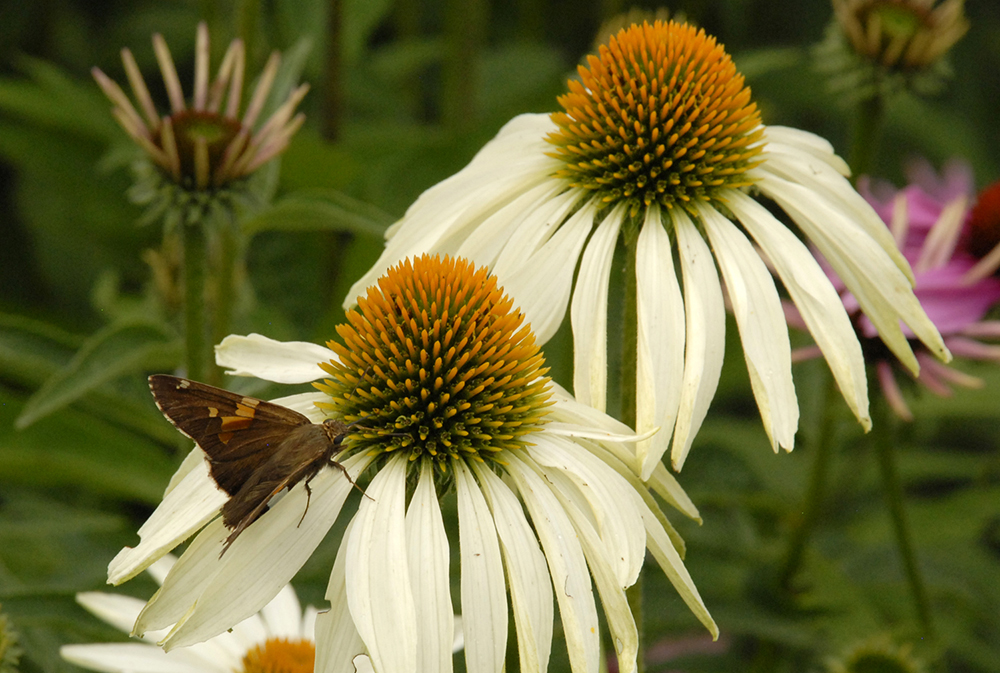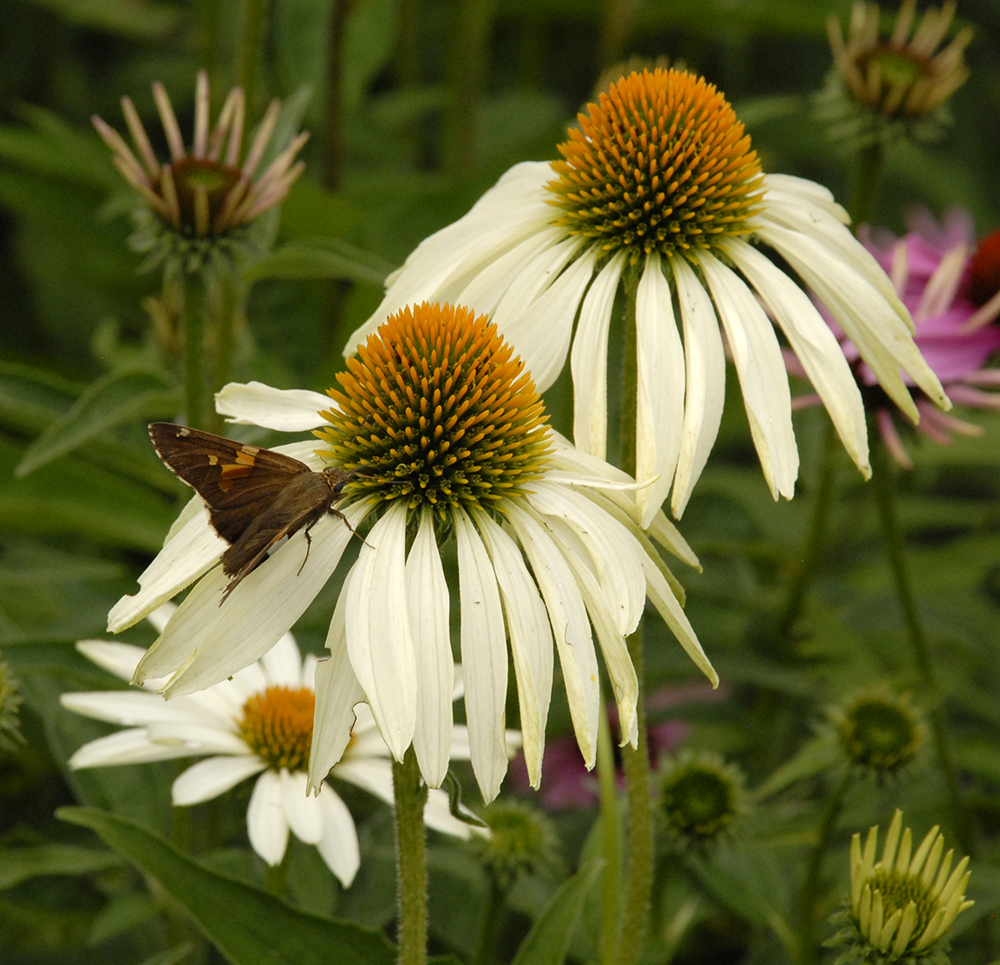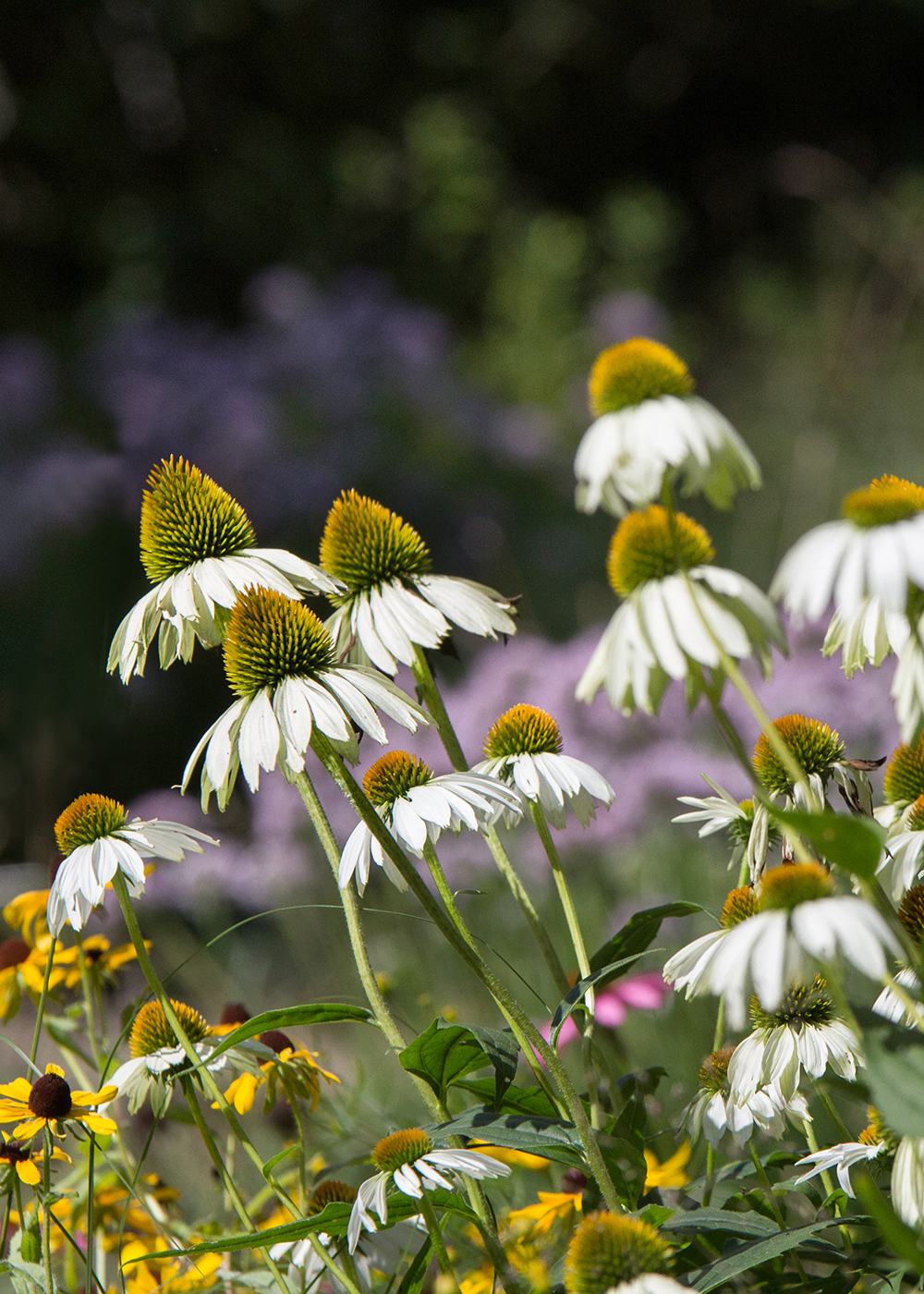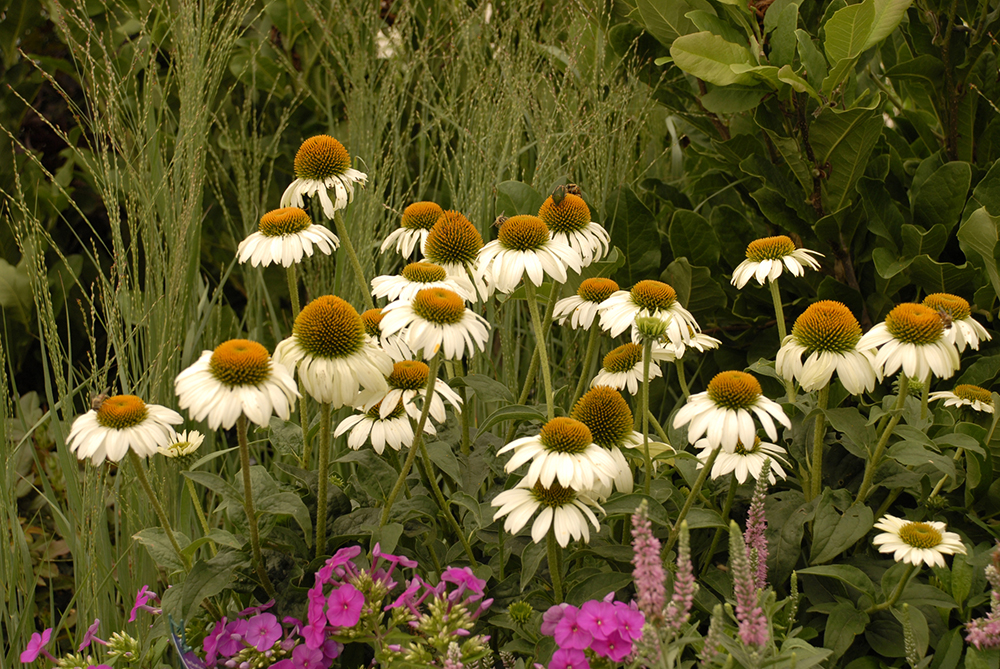Echinacea purpurea 'White Swan'
ConeflowerEchinacea purpurea 'White Swan'
ConeflowerThe classic white coneflower, prized for its reliability and sweet honey-like fragrance. Large, white flowers with prominent copper cones and reflexed petals are produced over many months. Easy to grow in any sunny spot where it will attract birds and pollinators.
Plant Details
- Zone: 3 - 9
- Height: 24-36"
- Spread: 18"
- Exposure: Full Sun, Part Shade
- Soil Moisture: Low Water Needs, Moderate Water Needs
- Drought tolerant: No
- Bloom time: Early Fall, Late Summer, Midsummer
- Foliage Color: Green Shades
- Flower Color: White Shades
- Fragrant: Yes
- Good Cut Flower: Yes
- Native: Nativar
- Deer resistant: Yes
- Rabbit resistant: No
- Bee-friendly: Yes
- Attracts butterflies: Yes
- Attracts hummingbirds: Yes
- Groundcover: No
- Roy Diblik Favorite: No
Plant Details
- Zone: 3 - 9
- Height: 24-36"
- Spread: 18"
- Exposure: Full Sun, Part Shade
- Soil Moisture: Low Water Needs, Moderate Water Needs
- Drought tolerant: No
- Bloom time: Early Fall, Late Summer, Midsummer
- Foliage Color: Green Shades
- Flower Color: White Shades
- Fragrant: Yes
- Good Cut Flower: Yes
- Native: Nativar
- Bee-friendly: Yes
- Deer resistant: Yes
- Rabbit resistant: No
- Attracts butterflies: Yes
- Attracts hummingbirds: Yes
- Groundcover: No
- Roy Diblik Favorite: No
Grower Information
For strong, multi-stemmed, finished plants, plant our vernalized plugs after March 15 once the plugs have broken dormancy and are ready to grow. Daylength is key: 13+ hours of daylight is a necessity when finishing Echinacea.
If planting the summer prior to sale, start early enough to obtain complete rooting before the beginning of fall. Ease up on fertility in early fall to allow plants to go naturally dormant. Clean up the foliage only after plants are completely dormant. Avoid excessive moisture and temperature fluctuations during winter.
- PowerPlug Size(s): 32s
- Optimal Planting Time: Spring
- Retail Sales Window: Fall, Summer
- Moisture in Production: Average
- Requires Shade in Production: No
- Vernalization Required for Bloom: No
- Vernalization Beneficial: Yes




